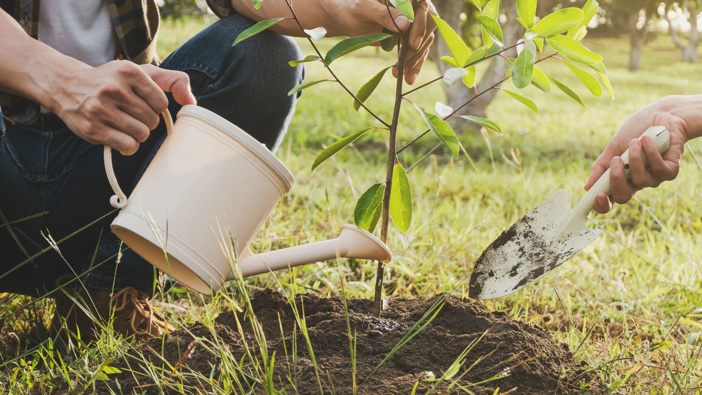A few weeks ago, I made a quick comment about taking care when gardening and walking on wet soil. Compaction of the soil often causes removal of air bubbles from the soil and the roots will then be permanently surrounded by moisture; this can cause rotting and a heap of health problems for the plant.
The “Rhizosphere” is the area around the roots of plants (trees, shrubs, herbs, annuals, perennials etc). It is the soil-zone that literally does all the work for Life on the Planet.
Here the soil is probably its most Bio-diverse, with an incredible array of species, working to create fertility that is often utilised by the plants. It makes perfect sense that the roots of plants therefore inhabit that area of the soil.
We’re talking Fungi and Bacteria, Insects and other invertebrates that literally consume dead plant materials and turn it into organic matter and compost that can chemically grab minerals and all the fertiliser elements and slowly release it to the plant roots.
Rhizospheres contain a huge number of species, each doing their own job. Most of these jobs are in the field of “recycling”, others in “transport” (taking organic nutrients down to the roots) and then there are the predators and parasites (critters such as centipedes and nematodes) that take advantage of the abundance of life.
I love the Tardigrades (“water Bears”) which are famous for their ability to survive being thrown into liquid nitrogen (cryptobiosis) and stay alive in that hostile environment for decades, while their normal life cycle spans just one year. But even these remarkable critters will struggle in compacted soil!
The Soil (and especially its Rhizosphere) is – no doubt – one of the most important habitats on our planet. It provides us with food, supports huge food chains, is habitat for huge numbers of invertebrates and fungi, it grows trees (carbon sink – Oxygen – clean air – complex sugars – Supports a healthy water-cycle – stabilises climate – creates micro-climates – fixes Nitrogen – etc)
So why the heck do New Zealanders call it “dirt”? If only we could have a look inside the soil layers and watch what’s going on.
Well… when it comes to the actual root structures of plants and trees: we can! I recently came across a website from my alma mater University (Wageningen) in the Netherlands. This site is absolutely plastered with pictures of root structures of garden trees, shrubs and plants in the most incredible way. It literally gives you a view of the Rhizosphere and how every botanical species has its own characteristic shape and size of the root zone.
You can see what a deep-rooted tree looks like (and why it can enter your sewer drain when it is planted too close to the house) and you can get an idea how certain shallow-rooters cover huge areas.
LISTEN ABOVE
Take your Radio, Podcasts and Music with you









